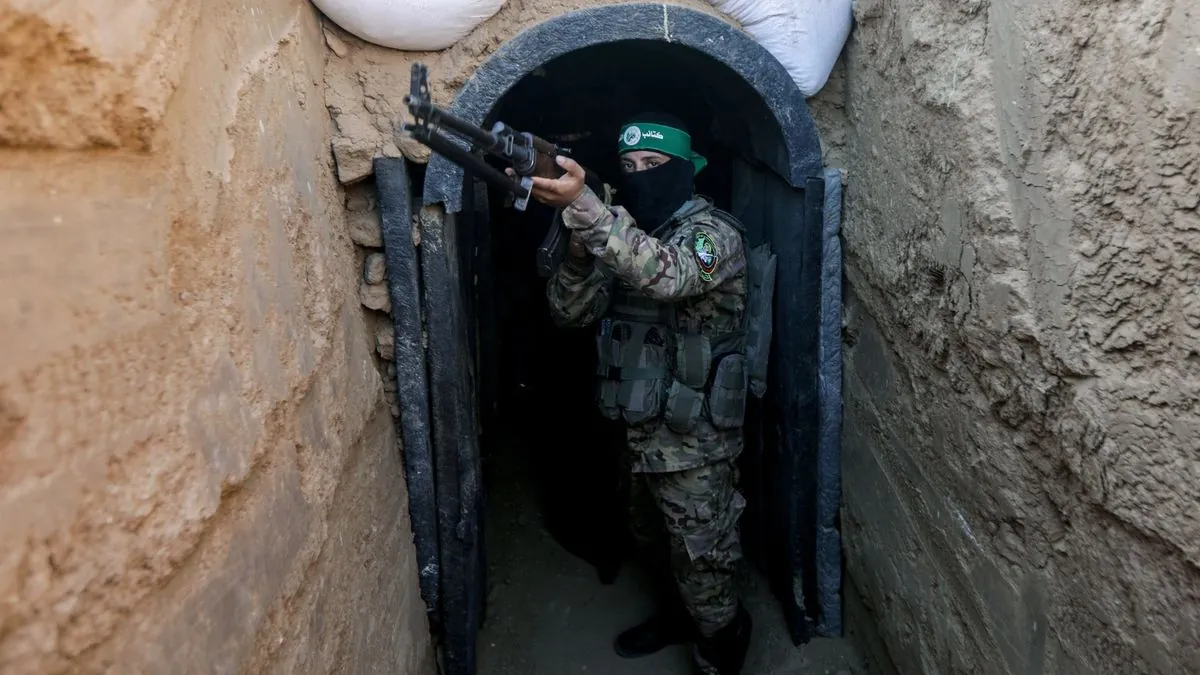In April 2023, Yahya Sinwar, Hamas's top leader in the Gaza Strip, cryptically hinted at a "surprise" during a meeting with Palestinian businessmen. Six months later, this ominous foreshadowing materialized into the devastating October 7 attack on Israeli villages and military bases, resulting in approximately 1,200 deaths and 250 hostages.
The assault unveiled Hamas's meticulously planned operational strategy, showcasing the group's ability to arm itself for both the initial attack and a prolonged resistance phase. Despite years of isolation within the densely populated Gaza Strip, Hamas had amassed an impressive arsenal and constructed intricate financial and defensive networks.
Hamas, founded in 1987 during the First Intifada, has evolved significantly over the years. The organization, whose full name "Harakat al-Muqawamah al-Islamiya" translates to "Islamic Resistance Movement," has been a major player in Palestinian politics and military operations against Israel for decades.
Under Sinwar's leadership, Hamas became intensely focused on achieving self-sufficiency. The group developed the capacity to produce its own weapons and explosives, enabling it to carry out complex operations involving thousands of participants while maintaining strict secrecy.
Hamas's most impressive engineering feat is its extensive tunnel network beneath Gaza. Estimated to span hundreds of miles, this underground maze consists of interlinked, reinforced passages, rooms, and bunkers. Ghazi Hamad, a member of Hamas's political bureau, stated, "We succeeded in making manufacturing factories underground because we knew that one day all the channels would be closed."
The Israel Defense Forces (IDF) discovered that up to 80% of Hamas's weapons were manufactured in Gaza. The group's arsenal includes homemade short- and medium-range rockets, such as the M-75 and Qassam, as well as antitank IEDs, Claymore-type antipersonnel mines, and modified commercial drones capable of dropping explosives.
In January 2024, the IDF uncovered Hamas's manufacturing hubs, revealing dedicated fabrication centers for producing small arms, ammunition, and explosives. These underground workshops formed crude assembly lines, creating what Matthew Levitt, a former Treasury Department counterterrorism official, described as a "Hamas military industrial complex."
Despite significant losses over the past year, including the death of its top civilian leader and an estimated 15,000 fighters, Hamas continues to fight. The group's resilience and ability to adapt raise concerns about its potential to reconstitute itself in Gaza or elsewhere.
"Hamas built really well for this thing. In Gaza we were working day and night, day and night, 24 hours. We prepared a lot, not for one year or two years."
As the conflict enters its second year, Hamas appears to be shifting towards insurgency tactics. Social media posts by the group's military wing, the al-Qassam Brigades, have begun promoting the use of IEDs and other guerrilla warfare methods.
The devastation in Gaza has reportedly spurred recruitment for Hamas, with many embittered youths joining the organization. A senior Arab intelligence official noted, "There is no shortage of young volunteers. Perhaps they are not as well trained, but they will help Hamas make up for its losses."
As Hamas continues to adapt and evolve, the long-term implications of this conflict remain uncertain. The group's demonstrated ability to prepare and execute complex operations, combined with its ongoing recruitment efforts, suggests that the challenges posed by Hamas are far from over.
